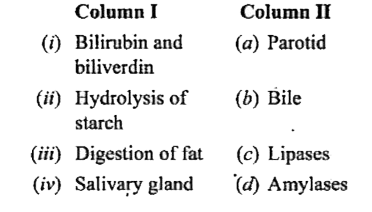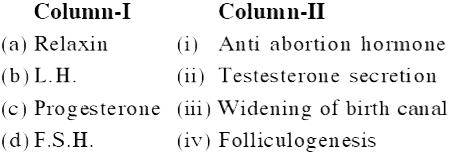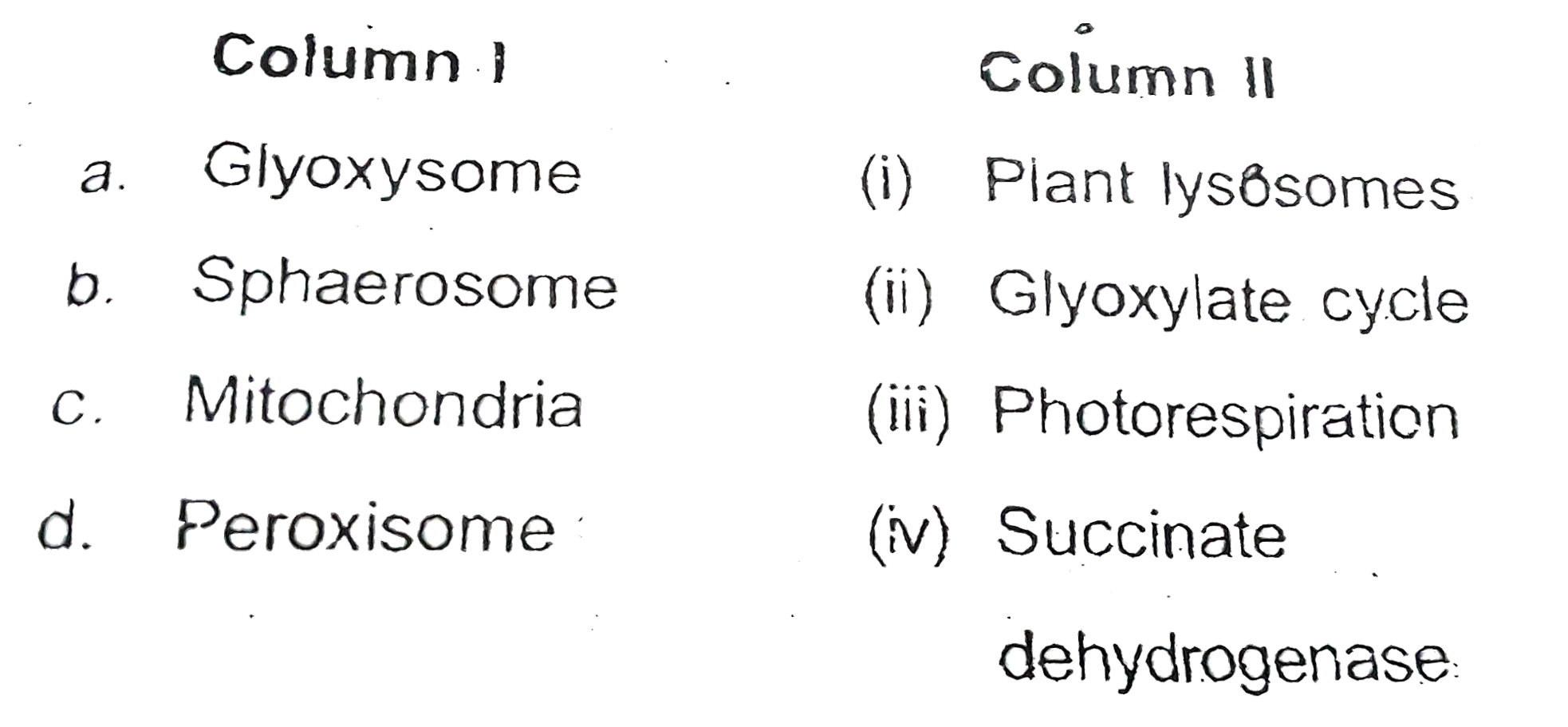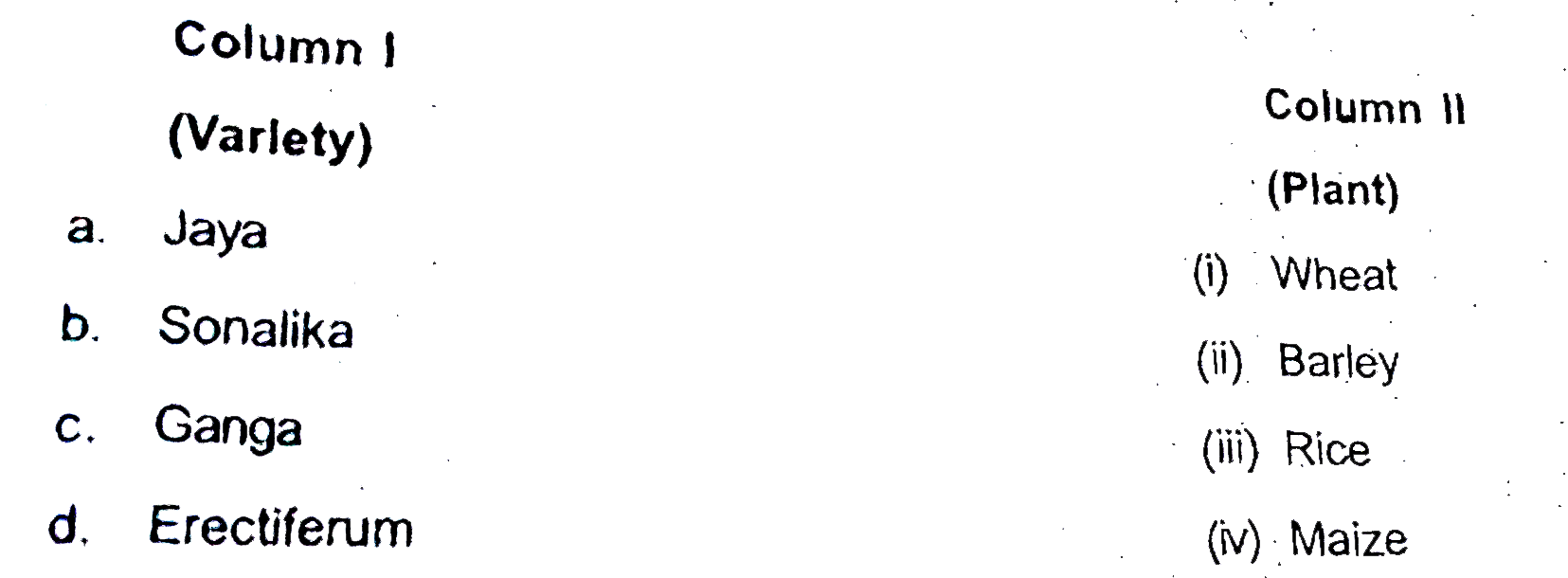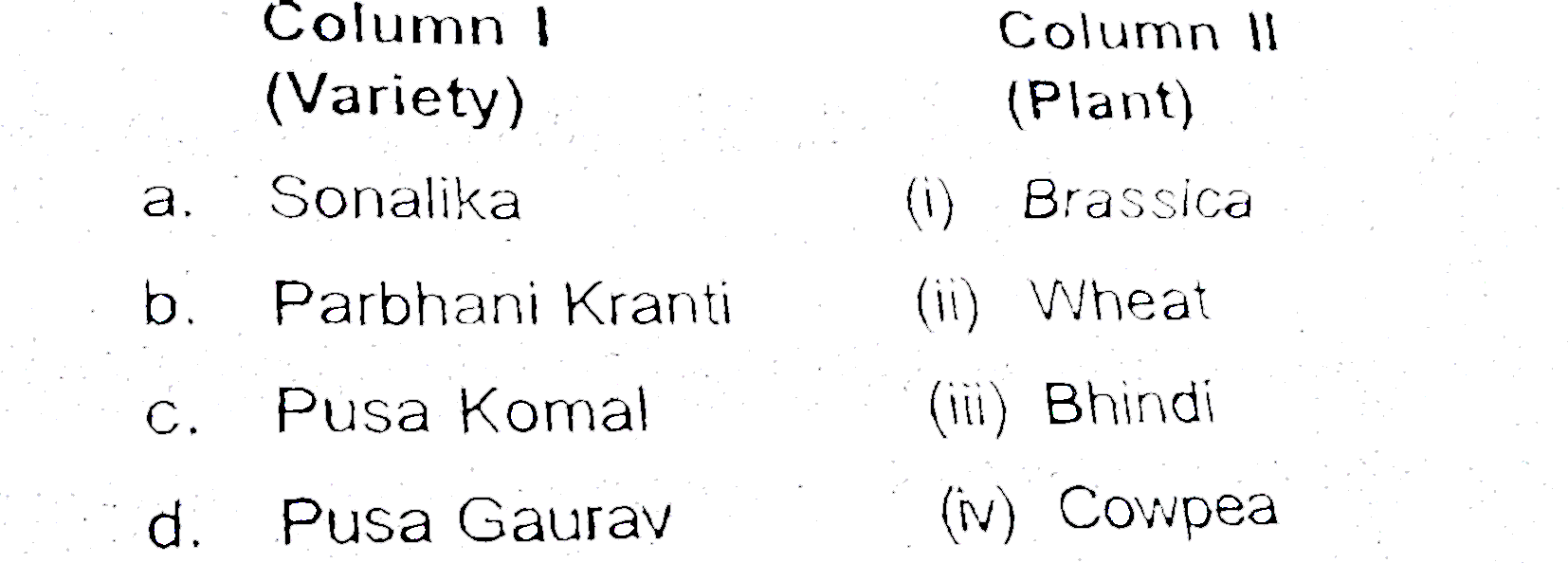Match the columns :
I IIa Phototaxis1. Circular movement of protoplasm in response to warm conditionb Thermotaxis2. Upward movement of floral organsc Chemotaxis3. Drooping of leafd Hyponasty4. Movement of anther- ozoids towards archegoniae Seismonasty5. Movement of Chlamydomonas
(a) - (5), (b) - (4), (c) - (3), (d) - (2), (e) - (1)
(a) - (5), (b) - (1), (c) - (4), (d) - (4), (d) - (2), (e) - (3)
(a) - (4), (b) - (5), (c) - (1), (d) - (2), (e) - (3)
(a) - (2), (b) - (3), (c) - (4), (d) - (5), (e) - (1)
The correct Answer is:B
To match the columns correctly, we need to understand the definitions of each term in Column I and find the corresponding movement in Column II. Here’s the step-by-step solution:
Step 1: Understand Phototaxis
- Definition: Phototaxis refers to the movement of an organism in response to light.
- Matching: The movement of Chlamydomonas (a green alga) towards light is a classic example of phototaxis.
- Match: A (Phototaxis) → 5 (Movement of Chlamydomonas).
Step 2: Understand Thermotaxis
- Definition: Thermotaxis is the movement in response to temperature.
- Matching: The circular movement of protoplasm in response to warm conditions fits this definition.
- Match: B (Thermotaxis) → 1 (Circular movement of protoplasm in response to warm condition).
Step 3: Understand Chemotaxis
- Definition: Chemotaxis refers to movement in response to chemical stimuli.
- Matching: The movement of antherozoids towards archegonia is a well-known example of chemotaxis.
- Match: C (Chemotaxis) → 4 (Movement of antherozoids towards archegonia).
Step 4: Understand Hyponasty
- Definition: Hyponasty is the upward movement of plant parts, typically in response to certain stimuli.
- Matching: The upward movement of floral organs fits this definition.
- Match: D (Hyponasty) → 2 (Upward movement of floral organs).
Step 5: Understand Seismonasty
- Definition: Seismonasty is a movement in response to mechanical stimuli, such as touch.
- Matching: The drooping of leaves in the touch-me-not plant (Mimosa pudica) is a classic example of seismonasty.
- Match: E (Seismonasty) → 3 (Drooping of leaf).
Final Matches
- A → 5 (Phototaxis → Movement of Chlamydomonas)
- B → 1 (Thermotaxis → Circular movement of protoplasm in response to warm condition)
- C → 4 (Chemotaxis → Movement of antherozoids towards archegonia)
- D → 2 (Hyponasty → Upward movement of floral organs)
- E → 3 (Seismonasty → Drooping of leaf)
Summary of Matches
- A: 5
- B: 1
- C: 4
- D: 2
- E: 3
- Definition: Phototaxis refers to the movement of an organism in response to light.
- Matching: The movement of Chlamydomonas (a green alga) towards light is a classic example of phototaxis.
- Match: A (Phototaxis) → 5 (Movement of Chlamydomonas).
- Definition: Thermotaxis is the movement in response to temperature.
- Matching: The circular movement of protoplasm in response to warm conditions fits this definition.
- Match: B (Thermotaxis) → 1 (Circular movement of protoplasm in response to warm condition).
- Definition: Chemotaxis refers to movement in response to chemical stimuli.
- Matching: The movement of antherozoids towards archegonia is a well-known example of chemotaxis.
- Match: C (Chemotaxis) → 4 (Movement of antherozoids towards archegonia).
- Definition: Hyponasty is the upward movement of plant parts, typically in response to certain stimuli.
- Matching: The upward movement of floral organs fits this definition.
- Match: D (Hyponasty) → 2 (Upward movement of floral organs).
- Definition: Seismonasty is a movement in response to mechanical stimuli, such as touch.
- Matching: The drooping of leaves in the touch-me-not plant (Mimosa pudica) is a classic example of seismonasty.
- Match: E (Seismonasty) → 3 (Drooping of leaf).
- A → 5 (Phototaxis → Movement of Chlamydomonas)
- B → 1 (Thermotaxis → Circular movement of protoplasm in response to warm condition)
- C → 4 (Chemotaxis → Movement of antherozoids towards archegonia)
- D → 2 (Hyponasty → Upward movement of floral organs)
- E → 3 (Seismonasty → Drooping of leaf)
- A: 5
- B: 1
- C: 4
- D: 2
- E: 3
Topper's Solved these Questions
- Plant Growth and MovementsBOOK - DINESH PUBLICATION ENGLISHCHAPTER - Plant Growth and MovementsEXERCISE - CYG
20 Videos
- Plant Growth and MovementsBOOK - DINESH PUBLICATION ENGLISHCHAPTER - Plant Growth and MovementsEXERCISE - BRAIN TEASERS-IV
41 Videos
- Plant Growth and MovementsBOOK - DINESH PUBLICATION ENGLISHCHAPTER - Plant Growth and MovementsEXERCISE - BRAIN TEASERS-IV
41 Videos
- PLANT BREEDING AND DISEASE CONTROLBOOK - DINESH PUBLICATION ENGLISHCHAPTER - PLANT BREEDING AND DISEASE CONTROLEXERCISE - Check your Grasp
10 Videos
- PLATYHELMINTHES-THE FLAT WORMSBOOK - DINESH PUBLICATION ENGLISHCHAPTER - PLATYHELMINTHES-THE FLAT WORMSEXERCISE - check your grasp
9 Videos
Similar Questions
Knowledge Check
Match the Column I and Column II:
 A1. i. 2. ii 3. iii 4. ivB1. i 2. ii 3. iii 4. ivC1. i2. ii 3. iii 4. ivD1. i 2. ii 3. iii 4. iv
A1. i. 2. ii 3. iii 4. ivB1. i 2. ii 3. iii 4. ivC1. i2. ii 3. iii 4. ivD1. i 2. ii 3. iii 4. ivMatch the Column I and Column II:
 A1. i 2. ii 3. iii 4. ivB1. i 2. ii 3. iii 4. ivC1. i 2. ii 3. iii 4. ivD1. i 2. ii 3. iii 4. iv
A1. i 2. ii 3. iii 4. ivB1. i 2. ii 3. iii 4. ivC1. i 2. ii 3. iii 4. ivD1. i 2. ii 3. iii 4. ivMatch the column I with column II
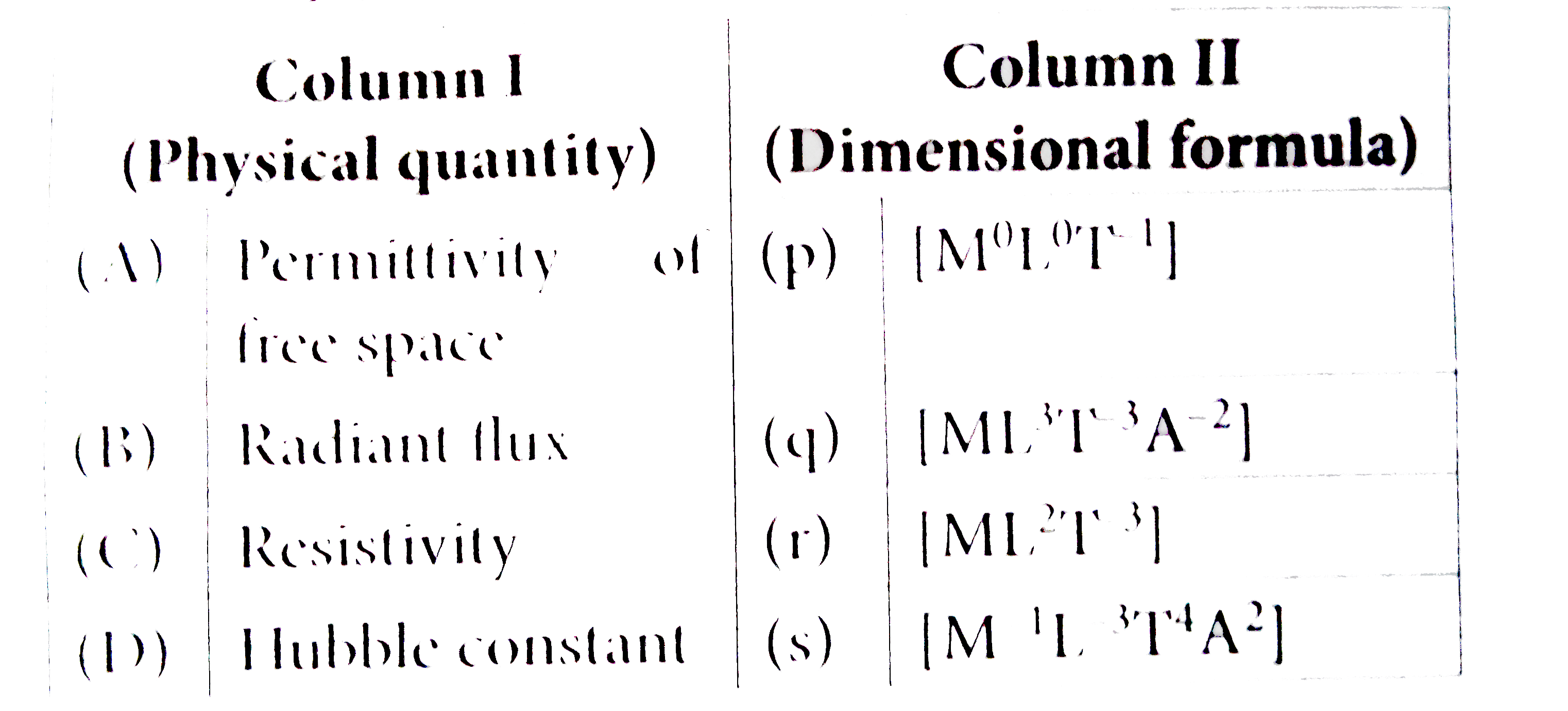 AA-p,B-q,C-r,D-sBA-q,B-p,C-s,D-rCA-s,B-r,C-q,D-pDA-r,B-s,C-p,D-q
AA-p,B-q,C-r,D-sBA-q,B-p,C-s,D-rCA-s,B-r,C-q,D-pDA-r,B-s,C-p,D-q

